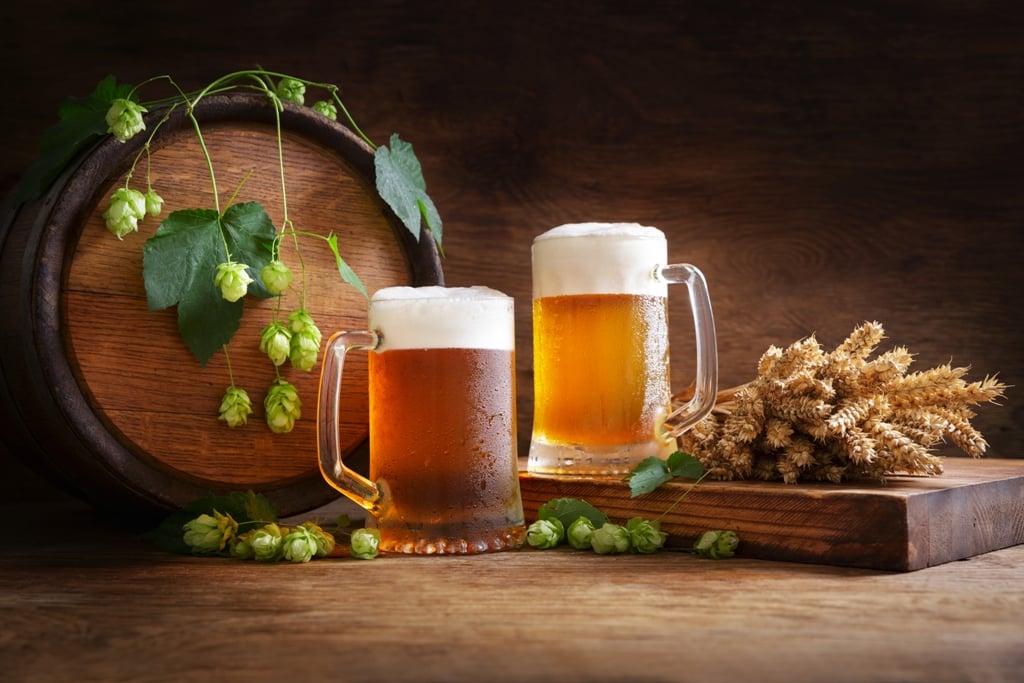This week I take a look at spontaneous fermentation for home brewers and what you might expect from using wild yeast with your beer.

What is Spontaneous Fermentation?
Spontaneous fermentation is basically using wild yeast (and often some bacteria) from the local environment to ferment your beer instead of cultivated yeast. Depending on your locale and fermentation area this can be wildly unpredictable versus using packaged brewing yeast, but it can also produce interesting beers.
Historically, many if not all beers were spontaneously fermented, and many Belgian styles still use this technique for making beers like lambics. Yeast was not isolated as a separate organism until roughly 1866 by Louis Pasteur who also developed the technique of pasteurization. Prior to his work, it was believed that fermentation was caused by decomposition. The process of isolating individual strains of yeast for brewing, therefore, is less than 150 years old.
Spontaneous fermentation relies on while yeast strains which typically produce some sour off flavors. In addition it is not uncommon for some ambient bacteria, notably lactobacillus and pediococcus, to be introduced. As a result, most spontaneous fermentations will have a sour note to them.
How to Spontaneously Ferment your Beer
There are a few ways to spontaneously ferment beer. First you want to start with some type of ale recipe, since it is difficult to reliably ferment lagers with wild yeast at lager temperatures. A variety of styles can be used though most of the wild ales I’ve had are lighter in character varying from a traditional English Ale to modern US styles like IPAs. Sour styles also work well as you will almost always have some sour flavor in a wild beer.
The brewing process, whether extract or all grain, is identical to brewing any other beer to create your wort. The only real difference comes when it is time to pitch your yeast. Here you have two options: you can either leave the fermenter open and rely on wild yeast in the area around your fermenter, or you can attempt to capture yeast from a particular location. With either method, it is not uncommon to ferment with an open fermenter, but with the second method you can use a closed fermenter.
The first method of leaving your fermenter open and just relying on the wild yeast around the fermenter is quite simple and most often used, but it does limit the wild yeast to those immediately around your brew area, which can work against you because, for example, the grains you mill and mash have a lot of bacteria on the husks, so your brew area can actually have quite a bit more souring bacteria then other locations.
The second method, which requires some pre-planning, can actually let you target areas outside your immediate brewhouse. To use this method I recommend creating a typical yeast starter, but without the yeast. Boil and prepare a few quarts of wort much as you would when creating a yeast starter, but don’t pitch any yeast. Next put the cooled wort in an open container and then take it to where you want to collect the wild yeast. This could be your back deck, yard, forest or other area of interest. Leave it there for a few hours to naturally collect some wild yeast and then return it to your house and let it ferment out. If you want to only collect yeast from one location, consider closing it with an airlock after you’ve completed your collection.
Let this starter ferment out for a few days, and then use your starter to inoculate the full batch of beer on brew day much as you would with a traditional yeast starter made from a single yeast strain. I like this method a bit better as it lets me collect a more interesting variety of wild yeast from outdoor locations instead of limiting myself to just what happens to be around the room I brew in.
Fermenting and finishing your wild yeast beer is not much different than a traditional beer, except that you might want to allow additional time for a complete fermentation before bottling. As spontaneous fermentations often include a mix of wild yeast and bacteria, the bacteria can continue to break down sugars and sour the beer well after the primary fermentation is done, so I like to add at least a few extra weeks to age the beer and assure fermentation is complete.
As I mentioned, you will often get a mix of both traditional beer flavors as well as wild and sour flavors from a spontaneous fermentation. Once you’ve made your first wild batch, you can often adjust the beer recipe balance on the next batch to better complement these wild flavors. Some brewers even cultivate samples of wild yeast from their “good” wild batches to use in future beers.
Spontaneous fermentation is a fun technique to try if you are looking for some variety in your beer. I hope you enjoyed this week’s article on wild yeast fermentation. Thanks for joining me on the BeerSmith Home Brewing Blog. If you want to take the guesswork out of brewing, please try my BeerSmith recipe software from BeerSmith.com. Be sure to sign up for my newsletter or my podcast (also on itunes and youtube) for more great tips on homebrewing.